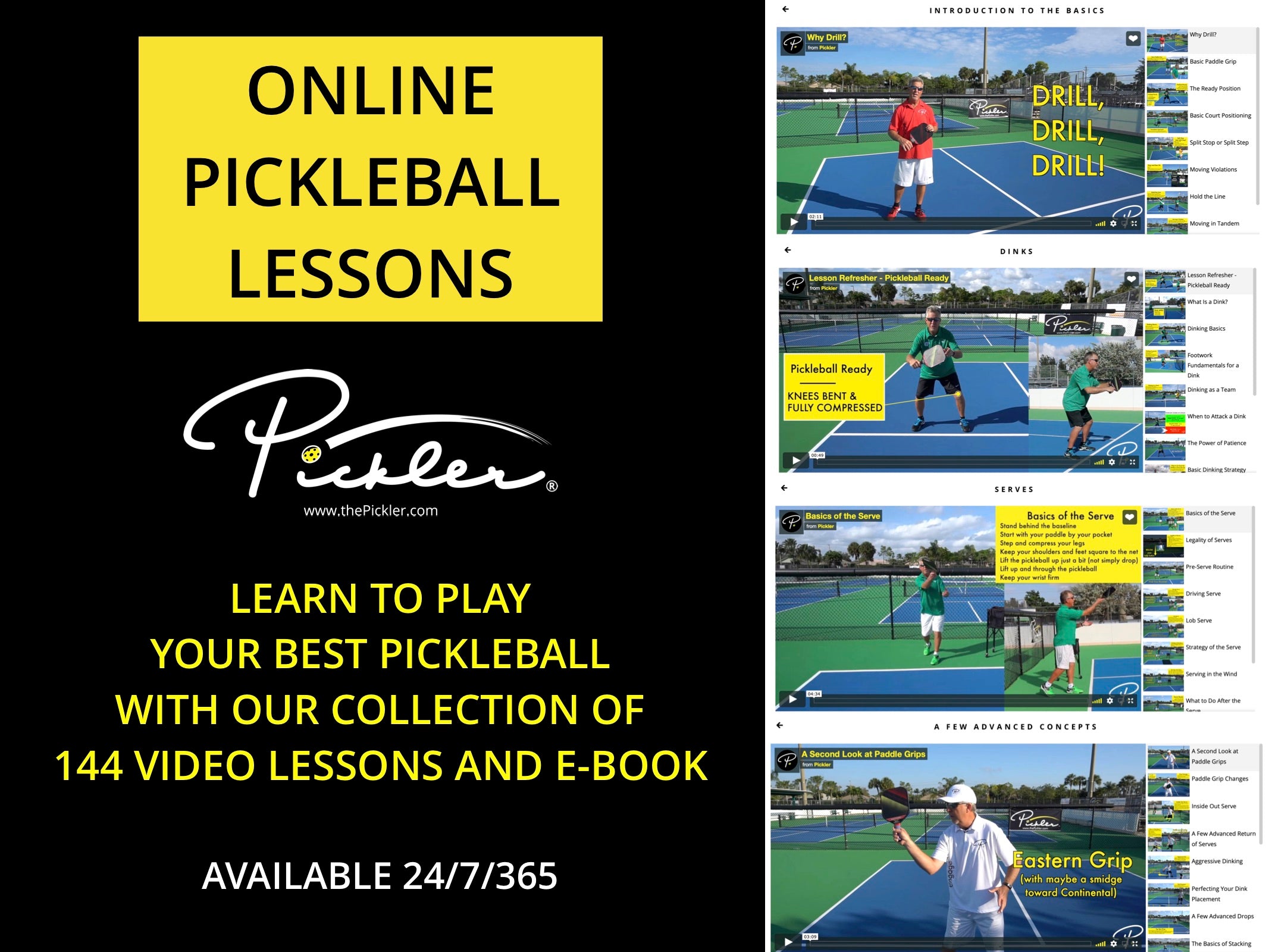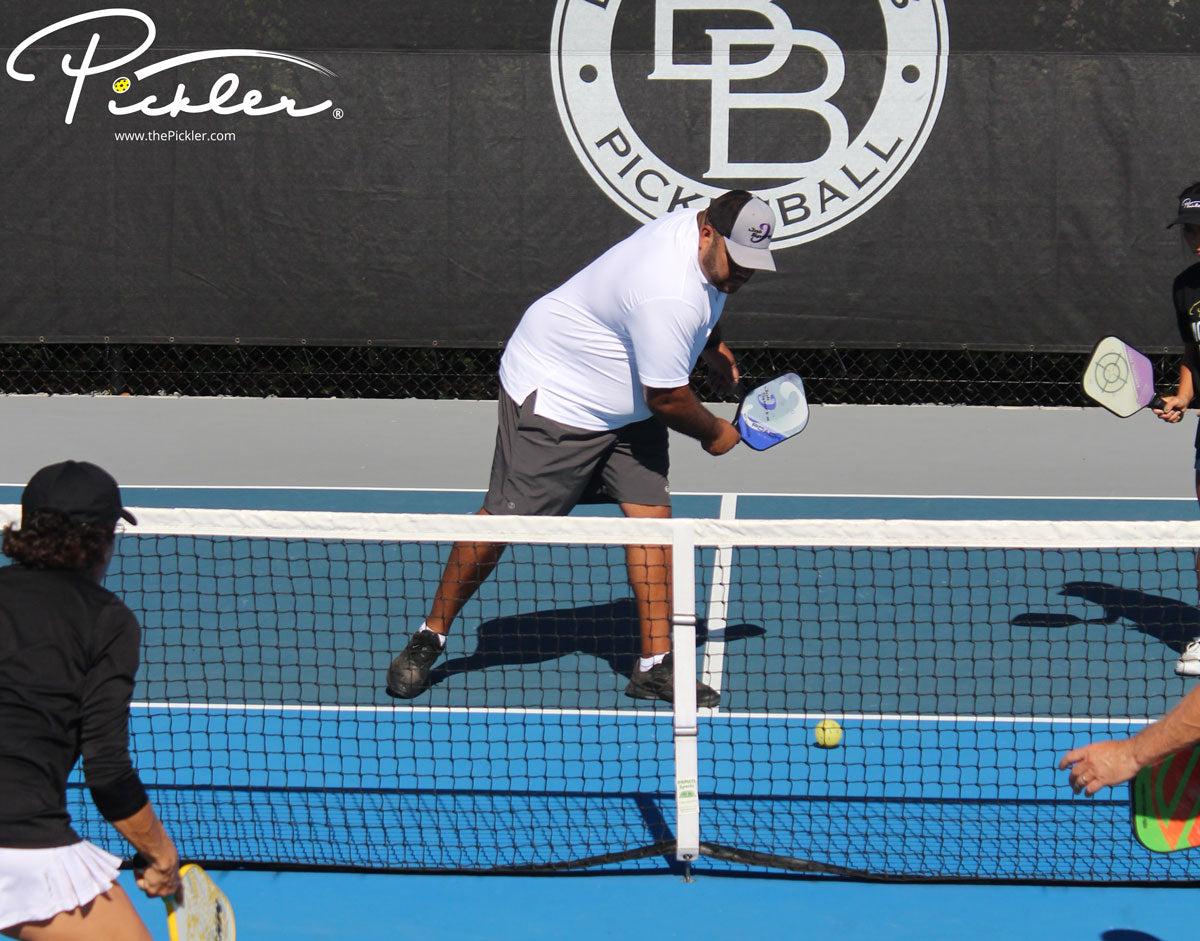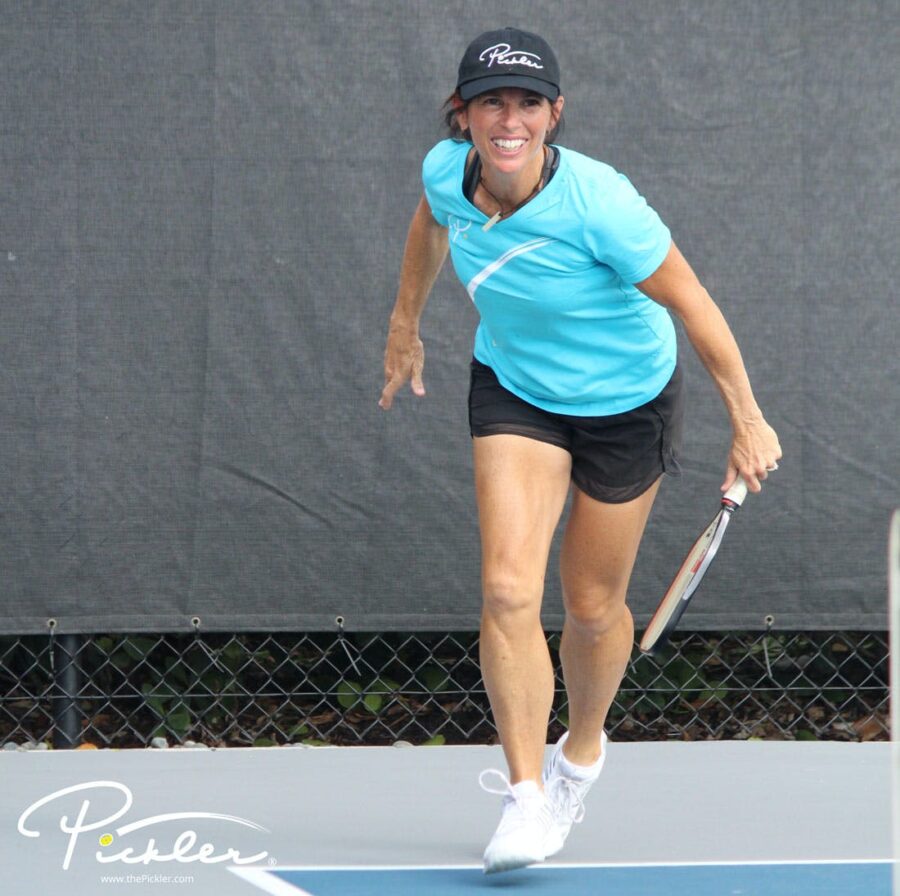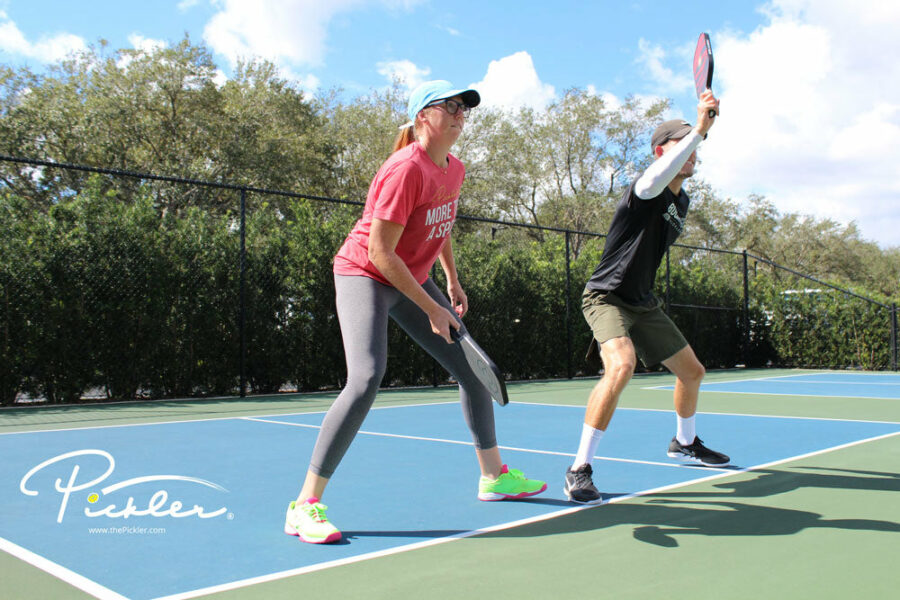Let’s talk pickleball strategy.
Imagine you are playing doubles pickleball. Your opponents are two right-handed players, and they are covering the pickleball court pretty well. You are moving the dink around, but they are getting it back. You try speeding it up, but they block it back. What is one strategy you can try to win points?
Why Target the Left Foot of the Right-Sided Player on the Pickleball Court
One pickleball strategy you can try to win points is to target the left foot of the right-sided player on the pickleball court. Why? There are a few reasons why this location is so powerful:
- A Weak Spot – Broadly speaking, you will notice a few trends on the pickleball court (*please note that these are over-generalizations and are not true of all players and circumstances):
- Most pickleball players have weaker backhand shots than forehand shots (including dinks).
- Most pickleball players are right-handed. So, you will often face a team that has two right-handed pickleball players.
- In competitive play, most doubles team will put their stronger player on the left-hand side of the pickleball court in order to keep his or her forehand in the middle (which will make it easier for that player to insert himself or herself into the point).
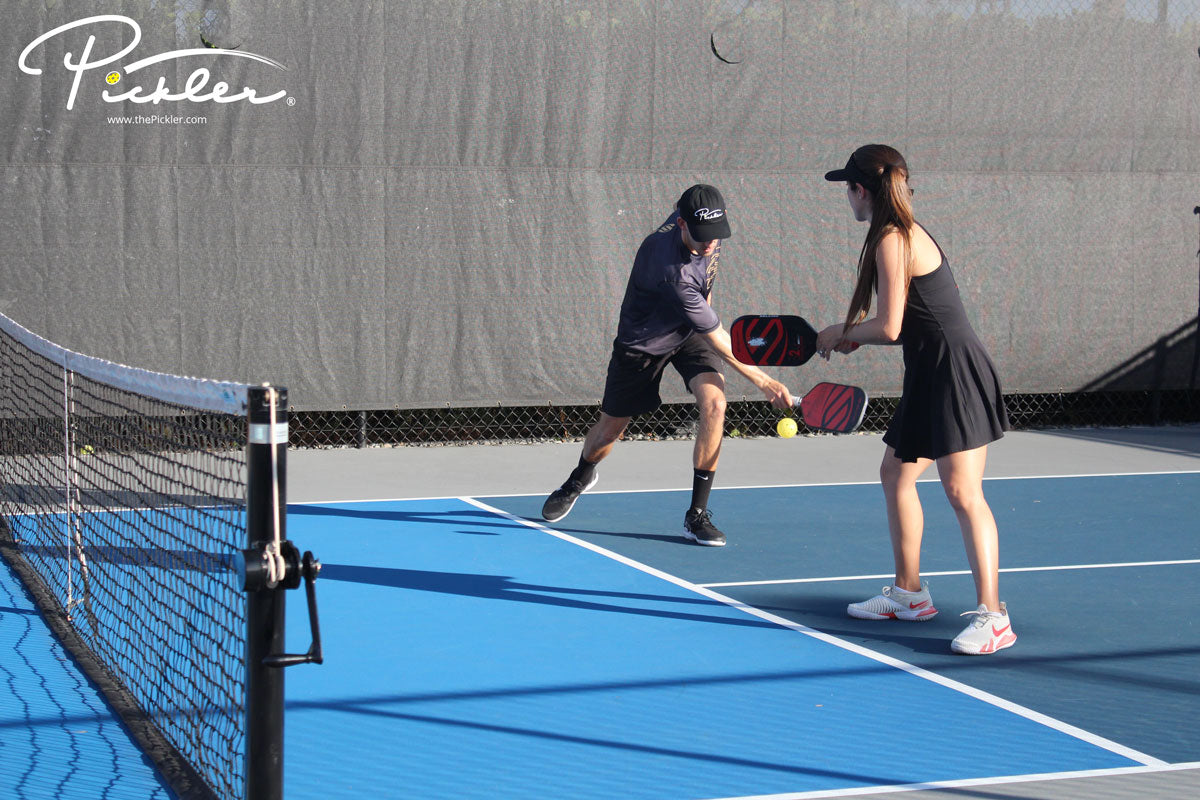
As a result of these trends, you typically want to target the backhand of the weaker player on the opposing team. This commonly is the left-hand side of the player on the right-hand side of the pickleball court. This location is commonly a weakness of the opposing team.
- High Percentage Pickleball – Pickleball players typically like shots that are high-percentage shots (in other words, less likely to result in unforced errors). So, the left-hand side of the right-sided player on the pickleball court is even more powerful because this location is in the middle of the court—in other words, it is high percentage. The middle of the court is high percentage because, being away from the sidelines of the court, you are less likely to hit the pickleball out of bounds.
- Force Your Opponents to Hit Up on the Pickleball – To zero in location even more, you should target the left foot of the right-sided player in order to require that player to hit up on the pickleball. Keeping the pickleball low at your opponents’ feet will make them hit up on the pickleball (which will hopefully result in a winning put away shot for you and your partner).
- Causes Confusion – A low shot (likely a dink) to the left foot of the right-sided player may cause confusion between your opponents. The middle can be a confusing place—particularly, if your opponents have not played together very much. More specifically, the targeted left foot can be confusing because it can be an awkward shot for the right-sided player, who may be hoping that the left-sided player (with his or her forehand in the middle) steps in to cut off the angle of the pickleball.
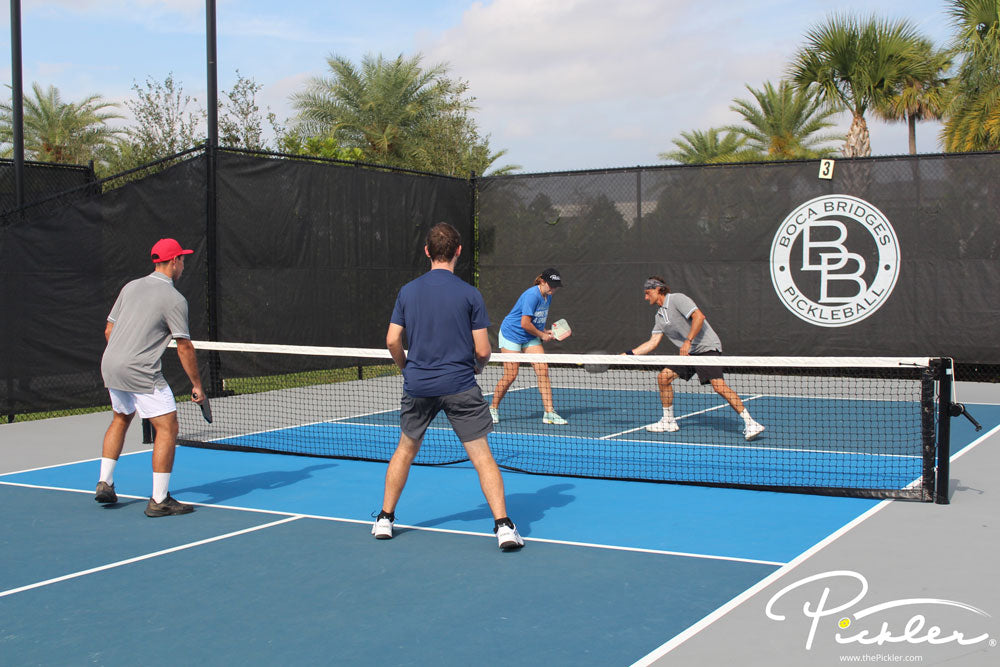
- Neutralizing Shot – A low shot (like a dink) is intended to be a neutralizing shot. Even further, a low shot to your opponent’s backhand foot can be very difficult to handle or do anything offensive with because it is difficult for your opponent to hit the pickleball out in front of their body. Your opponent is unlikely to speed it up, unlikely to throw up a lob, unlikely to hit an aggressive dink, etc. Rather, your opponent is likely to simply push the pickleball back over the net with a basic dink (and without much pace, spin, etc.).
- Opens Up the Pickleball Court – Lastly, the middle dink to the left foot of the right-sided player can help you open up the pickleball court. This is particularly valuable for those players that you are struggling to get the pickleball passed. For instance, say you take a dink to left foot of the right-sided player. Both of your opponents take a step toward the middle (regardless of which player actually hits the pickleball). When your opponents return the pickleball to you, since they both took a step toward the middle, you now have more room to hit the pickleball toward the sidelines. Then, your opponents will move toward the sideline to return the pickleball. Now, you have even more room in the middle of your opponents to target the left foot of the right-sided player (which, for the reasons noted above, is a good spot to target) because one moved toward the sideline. See a pattern? Use the dink to the left foot of the right-sided player to help you open up the pickleball court.
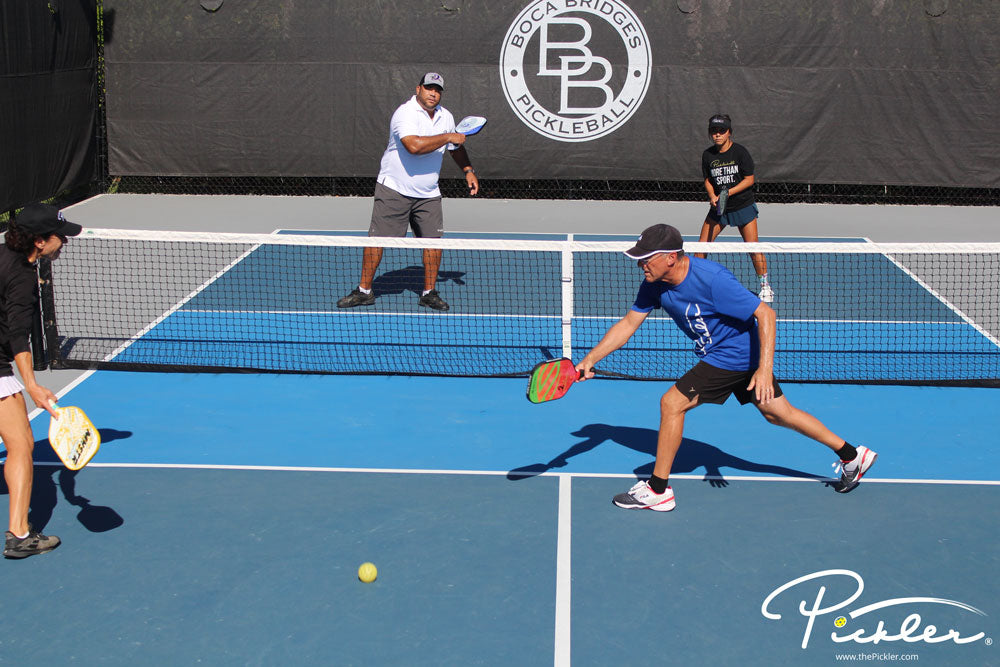
The Art of Targeting the Left Foot of the Right-Sided Player on the Pickleball Court
To implement this pickleball strategy, it is important to be purposeful with your dinks. Keep your dinks low and focused on that left foot of the right-sided player.
However, be sure to mix up your dinks. You can mix up your dinks to the target of the left foot—for instance, different spins, different depths of the Kitchen, different speeds, different trajectories (e.g., you may even try a bait ball!), etc. You can move the dink around to spread your opponents out, which will open up the targeted location of that left foot, too.
Also, pay attention to how your opponents move and work together, so that you can adapt your dink location. Is the left-sided opponent moving over and being aggressive in covering the middle and then some? Then, you will need to adapt your dinks to account for this aggressive movement. Do you need to keep the left-sided player close to the sideline to give you more room to target the left foot of the right-sided player? If so, then you may need to mix a few dinks to the sideline and then come back to the targeted left foot. Focus on how your opponents move together (which will likely include aggressive coverage from the left-sided player) and adapt your shots.
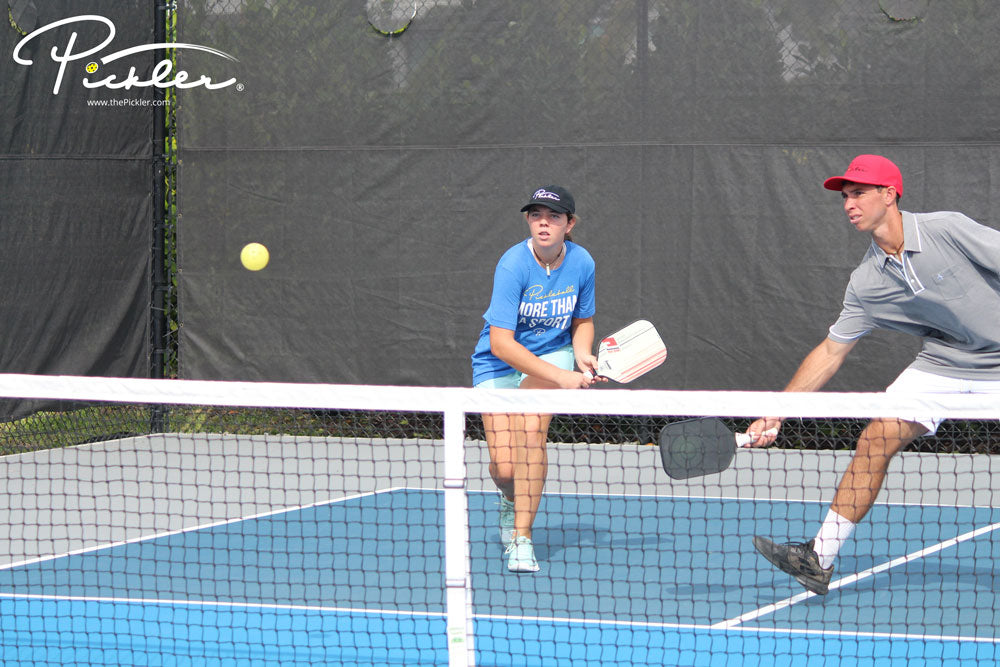
You may not always win in one shot. Rather, it is important to create and craft a point using multiple shots to set up your eventual winning shot.
Lastly, this pickleball strategy works best with two same-handed players. We have been discussing two right-handed pickleball players, but it also works with two left-handed pickleball players—but you would target the right foot of the left-sided player. If you are playing opposite-handed pickleball players, with their forehands in the middle, be wary of targeting the feet in the middle, as the shots will be headed to the players forehand sides.
WANT MORE PICKLEBALL TIPS AND STRATEGIES?
Struggling against aggressive players on the pickleball court? For instance, those pickleball bangers? Learn 7 strategies on how to defeat the banger now.

Plus, if you want more pickleball tips and strategies on every aspect of your pickleball game, check out Pickler’s online video lesson collection called My Pro Pickleball Coach. My Pro Pickleball Coach is a fraction of the price of one clinic or even one lesson, and features over 140 video lessons (over 7 hours of instruction!), as well as a corresponding e-book. These online video lessons are available on demand 24/7 and breakdown every aspect of the sport of pickleball, including pickleball drills, strategy, and advanced concepts, so you will play your best pickleball.
